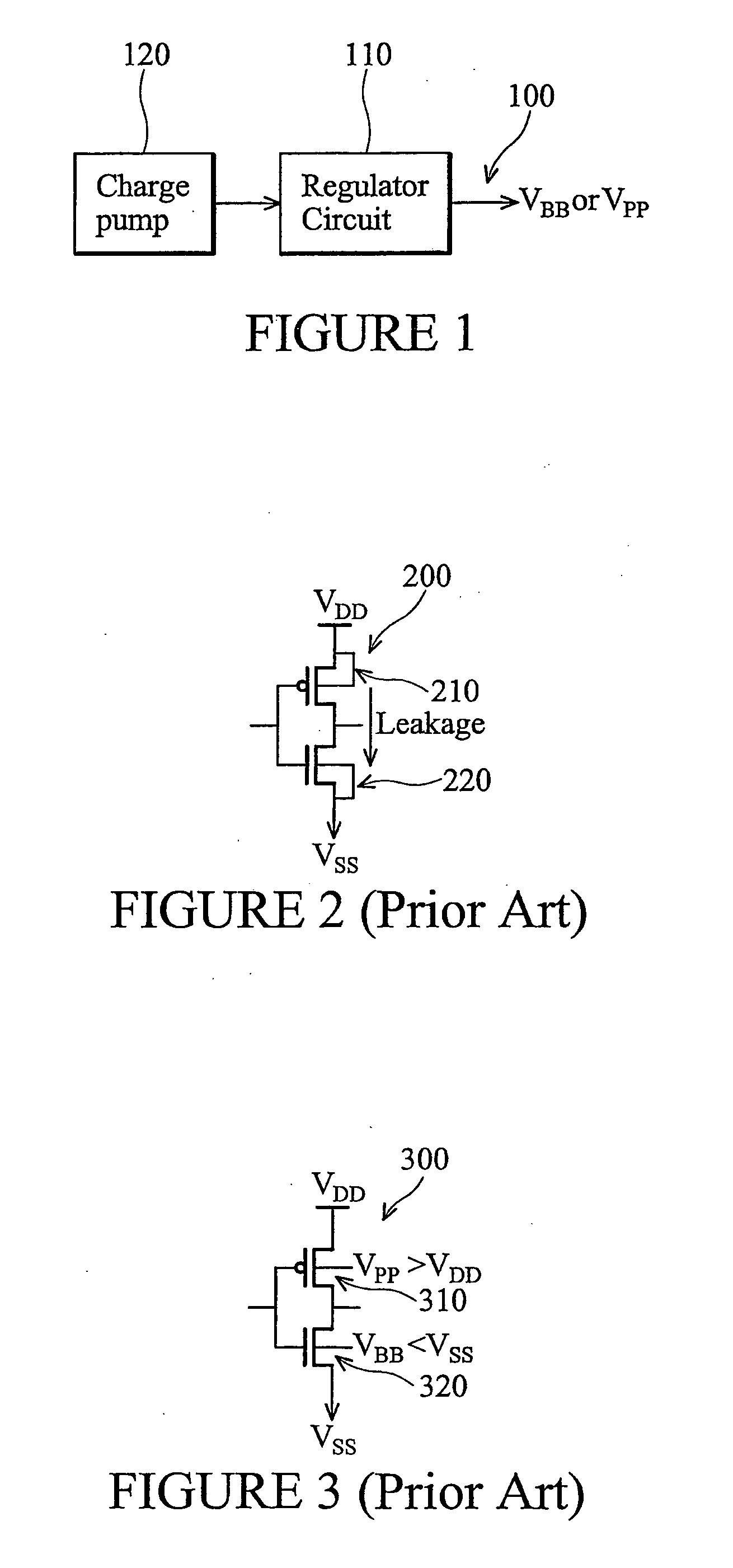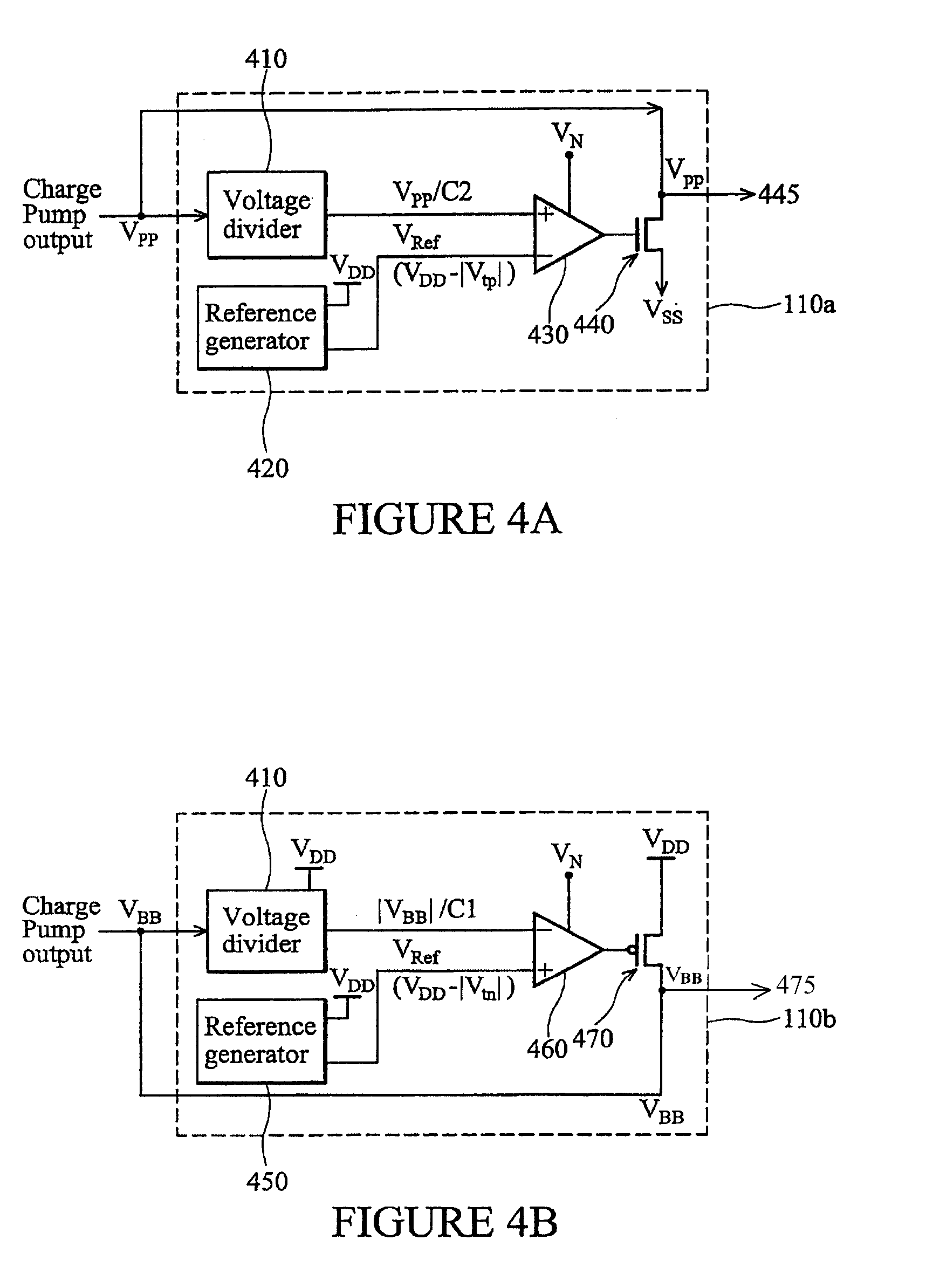Back-bias voltage regulator having temperature and process variation compensation and related method of regulating a back-bias voltage
a voltage regulator and temperature and process variation technology, applied in the direction of pulse technique, electric pulse generator details, instruments, etc., can solve the problems of increasing difficulty in providing, leakage current through transistors, and typical increase of leakage curren
- Summary
- Abstract
- Description
- Claims
- Application Information
AI Technical Summary
Problems solved by technology
Method used
Image
Examples
Embodiment Construction
[0018]Referring initially to FIG. 1, illustrated is a general block diagram 100 of a typical environment for a conventional back-bias voltage regulator circuit or a back-bias voltage regulator circuit 110 of the type disclosed herein. As illustrated, such voltage regulators 110 output a back-bias voltage (VPP / VBB), typically based on an input from a charge pump 120. More specifically, the back-bias voltage VPP / VBB is employed to reduce the current leakage typically present across metal-oxide-semiconductor (MOS) devices employed at an operating voltage that is too low or too high, as shown in FIG. 2.
[0019]Looking briefly at FIG. 2, illustrated is a conventional CMOS primary circuit 200 in need of back-bias voltage provided by a regulator circuit, such as the one illustrated in FIG. 1. The CMOS design is provided by a PMOS device 210 and an NMOS device 220. In this conventional layout, no back-bias voltage is applied to the circuit 200 during operation. As a result, a leakage current ...
PUM
 Login to View More
Login to View More Abstract
Description
Claims
Application Information
 Login to View More
Login to View More - R&D
- Intellectual Property
- Life Sciences
- Materials
- Tech Scout
- Unparalleled Data Quality
- Higher Quality Content
- 60% Fewer Hallucinations
Browse by: Latest US Patents, China's latest patents, Technical Efficacy Thesaurus, Application Domain, Technology Topic, Popular Technical Reports.
© 2025 PatSnap. All rights reserved.Legal|Privacy policy|Modern Slavery Act Transparency Statement|Sitemap|About US| Contact US: help@patsnap.com



